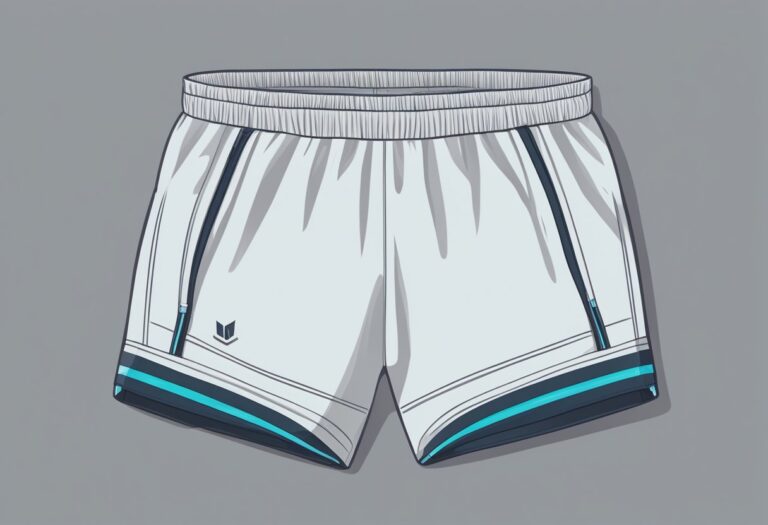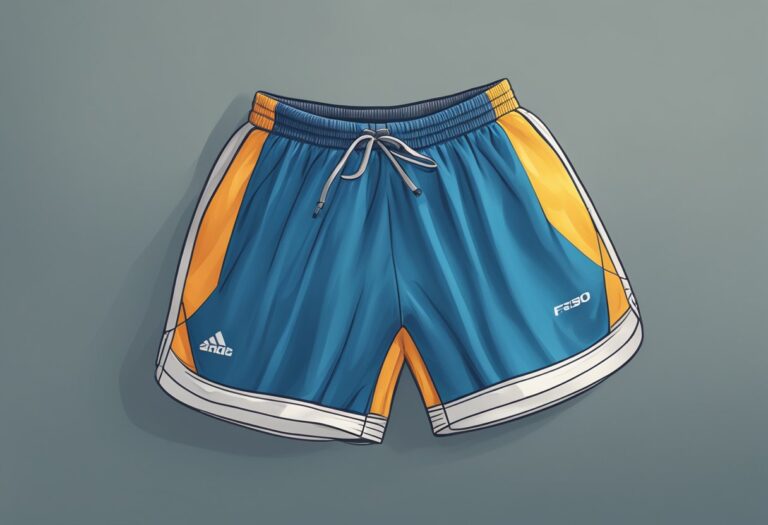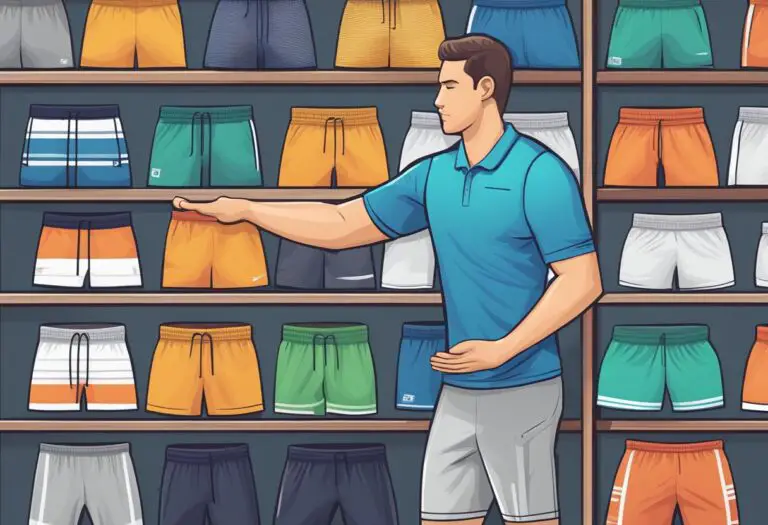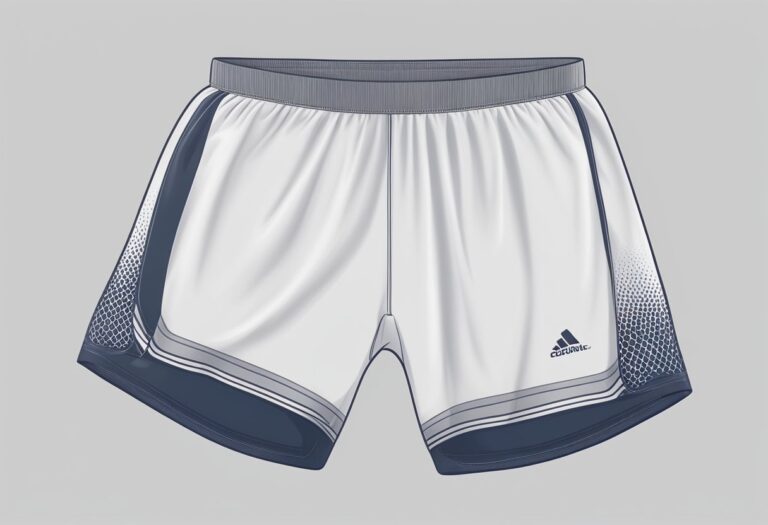What are the best materials for running shorts to ensure comfort and performance
What are the best materials for running shorts to ensure comfort and performance
When it comes to running, comfort and performance are two of the most important factors to consider. This is why choosing the right pair of running shorts is crucial for runners of all levels. The material of the shorts can make a big difference in terms of comfort, breathability, and moisture-wicking capabilities. In this article, we will explore the best materials for running shorts to ensure optimal comfort and performance.

One of the most popular materials for running shorts is polyester. This synthetic fabric is known for its durability, breathability, and moisture-wicking properties. Polyester running shorts are lightweight and quick-drying, making them a great choice for hot and humid weather. They also tend to be more affordable than other materials, making them a practical option for runners on a budget.
Another material to consider for running shorts is nylon. Like polyester, nylon is a synthetic fabric that is known for its durability and moisture-wicking capabilities. Nylon running shorts are lightweight and breathable, making them a great choice for long-distance running. They also tend to be more stretchy than polyester, allowing for greater freedom of movement. Overall, choosing the right material for your running shorts can make all the difference in terms of comfort and performance.
Importance of Material Selection

When it comes to running shorts, selecting the right material is crucial for both comfort and performance. The material of the shorts can impact how well they fit, how breathable they are, and how they move with the body during exercise. In this section, we will explore the importance of material selection for running shorts.
Comfort Considerations
Comfort is a top priority when it comes to running shorts. The right material can make all the difference in how comfortable the shorts feel during a workout. Materials that are soft and lightweight can help prevent chafing and irritation. Additionally, materials that have moisture-wicking properties can help keep the body dry and comfortable during intense workouts.
When selecting materials for running shorts, it’s important to consider the fit as well. Materials that are stretchy and flexible can help the shorts move with the body, preventing any discomfort or restrictions in movement. It’s also important to consider the waistband and any other areas of the shorts that may cause discomfort during exercise.
Performance Factors
In addition to comfort, the material of running shorts can also impact performance. Materials that are lightweight and breathable can help regulate body temperature, preventing overheating during exercise. Additionally, materials that are moisture-wicking can help prevent sweat buildup, which can cause discomfort and even lead to skin irritation.
When considering performance, it’s important to think about the type of running being done. For example, runners who do a lot of trail running may want to consider materials that are more durable and can withstand wear and tear. Additionally, runners who train in hot and humid conditions may want to consider materials that are specifically designed for high heat and humidity.
In conclusion, selecting the right material for running shorts is crucial for both comfort and performance. Materials that are soft, lightweight, and stretchy can help prevent discomfort during exercise, while materials that are breathable and moisture-wicking can help regulate body temperature and prevent sweat buildup. When selecting materials, it’s important to consider the type of running being done and any specific needs or preferences the runner may have.
Types of Materials Used in Running Shorts

When it comes to running shorts, the materials used can make a big difference in terms of comfort and performance. Here are some of the most commonly used materials in running shorts:
Natural Fibers
Natural fibers, such as cotton and bamboo, are breathable and soft to the touch, making them a popular choice for runners. However, they can absorb moisture and take longer to dry, which can lead to chafing and discomfort during long runs.
Synthetic Fibers
Synthetic fibers, such as polyester and nylon, are lightweight, moisture-wicking, and quick-drying, making them a popular choice for runners who want to stay dry and comfortable. They are also durable and can withstand wear and tear from frequent use. However, some people may find synthetic materials less breathable and less comfortable than natural fibers.
When choosing materials for running shorts, it’s important to consider factors such as breathability, moisture-wicking properties, and durability. Ultimately, the best material for running shorts will depend on personal preference and individual needs.
Characteristics of High-Performance Running Shorts

When it comes to running shorts, selecting the right material is crucial for ensuring comfort and performance. High-performance running shorts are designed to provide maximum comfort, breathability, and durability. Here are some of the key characteristics of high-performance running shorts.
Moisture-Wicking Properties
One of the most important characteristics of high-performance running shorts is their ability to wick away moisture. Moisture-wicking fabrics are designed to pull sweat away from the body and to the surface of the fabric, where it can evaporate quickly. This helps to keep runners cool and dry, even during intense workouts. Some of the best materials for moisture-wicking running shorts include polyester, nylon, and spandex.
Breathability
Breathability is another crucial characteristic of high-performance running shorts. Breathable fabrics allow air to circulate freely, which helps to regulate body temperature and prevent overheating. Mesh panels and perforated fabrics are often used in running shorts to increase breathability. Some of the best materials for breathable running shorts include polyester, nylon, and bamboo.
Durability
Durability is also an important consideration when selecting running shorts. High-performance running shorts should be able to withstand the rigors of regular use and frequent washing. Look for shorts made from high-quality materials that are designed to withstand wear and tear. Some of the best materials for durable running shorts include nylon, spandex, and polyester.
In conclusion, selecting the right materials for running shorts is essential for ensuring comfort and performance. High-performance running shorts should have moisture-wicking properties, be breathable, and durable. By choosing shorts made from high-quality materials, runners can enjoy a comfortable and productive workout.
Innovations in Running Apparel

Smart Fabrics
In recent years, several sportswear brands have introduced running shorts made from smart fabrics. These fabrics are designed to adapt to the wearer’s body temperature and moisture levels, ensuring that they stay comfortable and dry during their run. Smart fabrics are made from advanced materials that can wick away sweat, regulate body temperature, and even provide compression to support muscles during exercise.
One of the most popular smart fabrics used in running shorts is called Dri-FIT. This fabric is made from a blend of polyester and spandex, which makes it lightweight, stretchy, and breathable. Dri-FIT is also designed to wick away sweat, keeping the wearer cool and dry during their run.
Another popular smart fabric used in running shorts is called Coolmax. This fabric is made from a blend of polyester and other fibers, which makes it lightweight, breathable, and moisture-wicking. Coolmax is also designed to dry quickly, which means that even if the wearer gets caught in the rain, their shorts will dry out in no time.
Eco-Friendly Materials
As more and more people become concerned about the impact of their clothing on the environment, sportswear brands are starting to introduce running shorts made from eco-friendly materials. These materials are designed to be sustainable, biodegradable, and environmentally friendly.
One of the most popular eco-friendly materials used in running shorts is bamboo. Bamboo is a fast-growing plant that requires very little water and no pesticides to grow. Bamboo fabric is also naturally moisture-wicking, which makes it ideal for running shorts.
Another popular eco-friendly material used in running shorts is recycled polyester. This material is made from recycled plastic bottles and other waste materials, which helps to reduce the amount of waste in landfills. Recycled polyester fabric is also lightweight, breathable, and moisture-wicking, which makes it ideal for running shorts.
In conclusion, when it comes to choosing the best materials for running shorts, smart fabrics and eco-friendly materials are two of the most innovative options available. These materials are designed to provide comfort and performance while also being sustainable and environmentally friendly.
Choosing the Right Running Shorts
When it comes to running, having the right gear can make all the difference in terms of comfort and performance. One of the most important pieces of gear for runners is their shorts. Choosing the right running shorts is essential to ensure maximum comfort and performance during a run. Here are a few things to consider when selecting running shorts.
Fit and Cut
The fit and cut of running shorts are crucial in ensuring maximum comfort and performance. Running shorts should fit snugly but not be too tight, as this can restrict movement and cause discomfort. They should also be cut in a way that allows for a full range of motion, especially around the hips and thighs.
For men, shorts with a built-in liner can provide additional support and prevent chafing. Women may prefer shorts with a wider waistband or compression shorts for added support and comfort.
Weather and Climate Adaptability
The weather and climate can have a significant impact on the type of running shorts that are best suited for a particular runner. In hot and humid conditions, shorts made from lightweight and breathable materials such as polyester or nylon can help wick away moisture and keep runners cool.
In colder temperatures, runners may want to opt for shorts made from thicker materials such as fleece or wool to provide insulation and keep their muscles warm. Some running shorts also come with a built-in lining or compression layer for added warmth.
When it comes to choosing the best materials for running shorts, it’s important to consider factors such as breathability, moisture-wicking capabilities, and durability. Some of the best materials for running shorts include polyester, nylon, spandex, and mesh.
By taking into account the fit and cut of the shorts, as well as the weather and climate conditions, runners can select the best running shorts to ensure maximum comfort and performance during their runs.







